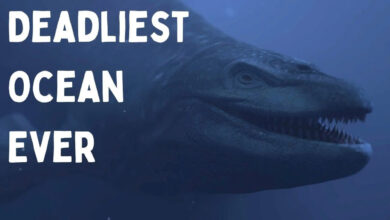The UnXplained: Deep Sea Monster Bites Shark in Half!

**William Shatner** begins by describing a shocking photo of a **mako shark**, badly damaged from the head down. He emphasizes the severity of the incident by noting the **massive bite mark** on such a large shark.
In **2003**, Shatner participated in a research project with **CSIRO** (Australia’s Commonwealth Scientific and Industrial Research Organization), which found that the shark showed signs of having been digested by another creature.
What is remarkable is that the internal temperature of this shark was recorded to be around **72 degrees Fahrenheit** (about 22 degrees Celsius), suggesting that it had been in the stomach of a living creature.
He notes that this temperature remained the same regardless of the location of the temperature recording device, suggesting that the shark may have been swallowed by a giant creature. Shatner raises puzzling questions about the nature of this creature, and this leads to an uncomfortable aspect of thinking: **What is it?**
He then moves on to an event that occurred in **2023**, when a group of whales beached themselves on the shores of **Western Australia**. Shatner theorizes that the whales may have been fleeing some kind of threat, suggesting that the reason could not be a regular **great white shark**, as whales do not usually strand themselves without serious reason.
Shatner goes on to speculate that if there was a creature as large as **65 feet** (20 meters), then this could explain the whales’ actions. He and another person, **Dave**, together raise the question of whether there is a possibility of some undiscovered creature in the ocean, emphasizing the importance of understanding what lurks in the deep ocean.
Finally, Shatner emphasizes that humans have only explored and mapped about **20%** of the ocean and have only seen **1% to 2%**.
This raises the possibility that there are strange and terrifying creatures lurking in unexplored waters, opening up interesting questions about the biodiversity and mysteries of the ocean.
He then suggests that the possibility of unseen creatures could change the way we understand marine ecosystems and what might be happening below the surface.








